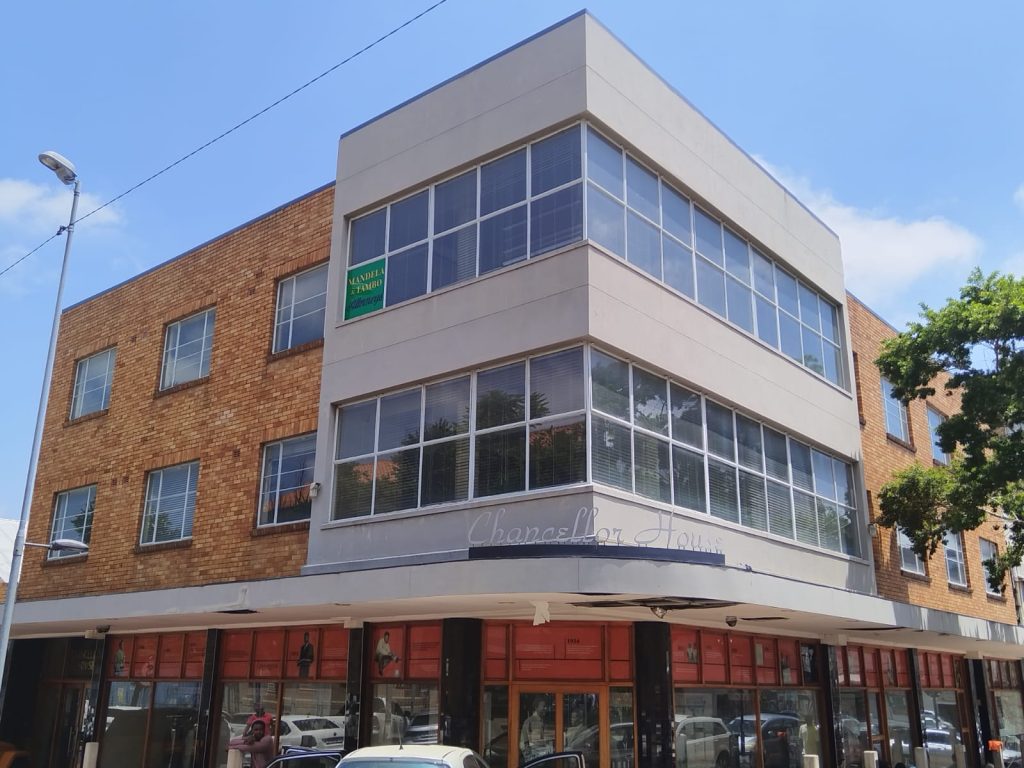Described by Clive Chipkin in his book Johannesburg Style as Luytens’s “great arc de triomphe”, the memorial is a 20 metre tall stone four arched structure, with a large bronze Angel of Peace elevated on top of the archway. The monument is set within memorial grounds bordering on the Zoo grounds.
Shortly after the South African War, Randlord Sir Lionel Phillips and others suggested a memorial to commemorate the British soldiers who had died in the conflict. In September 1904, Captain George A Hamilton-Dickson, a member of the Johannesburg Town Council, proposed at a Council meeting that a site should be allocated for the purpose of creating a memorial to the men who lost their lives in the war, and that the Council should initiate the project. The Council resolved that the venture should be undertaken by private initiative, although it would consider provision of a site. A public meeting was convened and a committee formed under the chairmanship of Captain Hamilton-Dicks on.
The Town Council felt that such a memorial should be a peace monument to foster reconciliation, commemorating those on both sides who fell in the war, regardless of nationality. This view was, unfortunately, not shared by Sir Lionel Phillips and the memorial committee set up at the time. Consequently, the memorial was to hold little relevance for those who identified with the Boer side in the conflict, and was derided as “Die Khaki Monument”.
The location of the memorial in Saxonwo ld was originally suggested by Sir Percy Lane, the Director of the Dublin Art Gallery and a personal friend of Lady Florence Phillips. In October 1910 Sir Lionel Philips committed his firm, H Eckstein and Co , to the purchase of 40 acres of the Sachsenwald Park, to be donated for the construction of the memorial. The Town council agreed to lay out the five vistas to the Memorial and to fence off the 40 acres.
A public fund-raising campaign was spearheaded by Sir Lionel Phillips and the monument committee. Phillips paid for the Angel of Peace fro m his own pocket, as his gift to the citizens of Johannesburg.
The memorial was designed by notable British architect Sir Edwin Luytens. The Angel of Peace was by the Russian sculptor Naoum Aronson.
The monument was erected to the memory of men of the Rand who fell in the service of the British Empire during the Anglo-Boer War. Partly because of its one-sided dedication, the Town Council chose to distance itself from the project, and the monument was largely neglected. The grounds and vistas surrounding it were gradually encroached upon by the neighbouring Zoo. The five vistas leading to the monument have largely been engulfed, and the only one that is still obvious is the avenue looking west from the memorial down into the Zoo.
In 1999 it was decided that the Memorial needed to consider all those who died in the War. The site was re-dedicated on 10 October of that year to “the memory of the men, women and children of all races and all nations who lost their lives in the Anglo-Boer War, 1899-1902”. Emphasis was placed on the role played by Black South Africans during the war, an aspect which had previously had little recognition. Originally called the Rand R egiments Memorial, at the re-dedication ceremony it was renamed the Anglo-Boer War/SA War (1899-1902) Memorial and designated a national heritage site.
Protected under Section 37 of the National Heritage Resources Act: Public Monuments and Memorials. “Public monuments and memorials must, without the need to publish a notice to this effect, be protected in the same manner as places which are entered in a heritage register …”. Since the Anglo-Boer War Memorial is older than 60 years, it is also protected in terms of Section 34 of the same Act.

A culmination of research gathered over many years, the Online Johannesburg Heritage Register is being launched on Nelson Mandela Day 18 July 2025.
Among the many heritage sites featured is Chancellor House, the downtown offices of Mandela and Tambo Attorneys in the 1950s. After having been vacant and shuttered for more than a decade, this iconic building is being revived and brought to life once again as offices for the Community Development Department, which oversees the City’s Arts, Culture & Heritage Services.